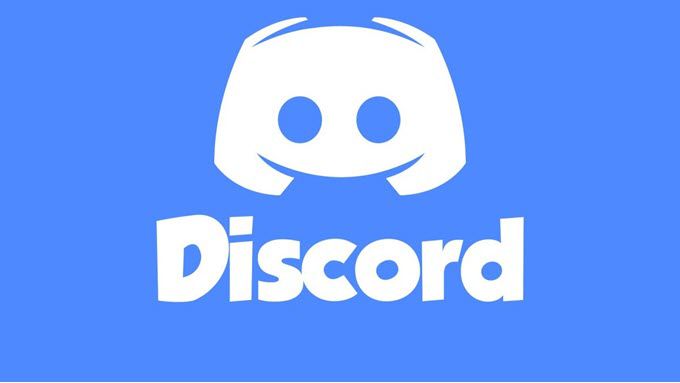
Discord is a cross-platform voice and text chat application intended for use while gaming.
Originally developed by Hammer & Chisel, it was released in 2015 as the primary means of communication between players on the FFXIV: ARR server. The open beta version that I use has been significantly updated since then, but this review will focus on its original design and features only.
Aside from a brief initial tutorial which you’ll pass through within minutes of starting up Discord for the first time, there isn’t much to set up or learn about how to operate the program. Even without reading any help files or taking advantage of any user tips provided during loading screens, anyone qualified for elementary school computer usage should be able to navigate their way around with few problems.
A lot of the reason for that simplicity is the lack of any distinctive interface. There’s nothing to click or tap on, and no unifying visual theme tying everything together into a complete whole. Instead, Discord chooses to divide its interface up into several different ‘pages’ within one window:
- General – this section includes your text chat input box and all of your profile options, such as account name and avatar selection.
- Friends list – this page shows you a list of everyone currently online who has added you as a friend, with their statuses (Available/Invisible) and user image next to each entry. You can also access their profiles from here by clicking on their names.
- Channels – these are designated chat rooms that you can enter and talk in along with everyone else in the same chatroom. You can add or remove channels from your list by clicking them, and open each channel’s settings by right-clicking on it.
- Server list – this is a simple list of all of the servers you’re currently subscribed to. You can join another server simply by double-clicking one here.
- Voice page – this section lets you change your voice output device/volume levels for both input and output, as well as test your microphone if applicable.
- Notifications – this section displays popups whenever someone talks to, adds or removes you from their friend list, joins/leaves/disconnects from a channel, or whenever someone comments on your profile. You can choose to disable these notifications from here if you wish.
There isn’t anything wrong with the general layout of Discord’s interface per se , but it feels a little too bland and barebones for my liking . It doesn’t have that same level of polish that Skype or TeamSpeak had back when they were dominant, nor does it have the sense of style and personality found in Mumble’s design.
The lack of a theme also makes everything feel a bit too segmented and disconnected from each other – I’ve been trying to come up with some sort of metaphor to describe its appearance, but all I could come up with was “a blank sheet” .
In contrast , Mumble’s interface is much more instantly recognisable and clearly laid out . The lack of any avatar picture may be seen as a drawback at first, but it also means that there’s no worrying about whether or not your choice was appropriate or tasteful. It has its own distinctive character that seperates it from the competition in its own way, and I find myself liking it for that even though it lacks some extra features like an in-game overlay etc.
Additionally , Mumble doesn’t feel like something I need to learn in order to get used to – I can click “Connect” , enter my username and password, and start talking within seconds. There aren’t any settings to fiddle with just for the sake of fiddling , nor are there any commands to memorise or actions that I need to discover before using it. In fact, the only thing that’s even slightly complicated is manually setting up a push-to-talk key if you’re not using an Xbox 360 controller , but even then it’s nothing too troublesome .
In contrast, Mumble has the more simplistic approach of “do everything from here” . There’s no extra buttons or menus, so there’s no ambiguity as to where specific options will be found. Even though Discord does have a menu bar for accessing different pages within its interface, it feels restrictive and clunky when compared with Mumble’s standalone window design (both in mobile apps and as a desktop client) .
The lack of uniformity across platforms is also noticeable – even though Discord itself only came out last month , the mobile apps already feel completely different to its desktop version. The PC app leaves a lot of things unexplained for those new to voice chat, and tries to do too many things at once by displaying some sections as separate apps within it .
By comparison, Mumble’s mobile counterparts are more consistent with its desktop design and functionality , albeit on a much smaller scale due to available screen space.
Mumble has a strong sense of identity that makes itself instantly recognisable, whereas Discord fonts feel more bland and generic in comparison . Though having said that, I’m definitely going to give the edge over Mumble when it comes to customizability , because I greatly appreciate being able to adjust the size of the chatbox , choose how my picture is displayed , or even have my own choice of background image .
There are not many options for customising the Discord interface . By comparison , Mumble has a lot more to play around with, including layout and theme changes as well as making your own custom emoticons. This is perhaps largely due to the fact that Mumble’s user base consists mostly of gamers – it makes sense that they would prefer something that caters to their needs better than generic cross-platform software.
Mumble wins out over Discord when it comes to customization, but it also takes longer to start up since you need to log in first on top of downloading it. As someone who usually only uses voice chat every so often, this isn’t too much of an inconvenience for me personally.
If you go by the number of features on offer , Discord is clearly superior with its extensive list of options . It covers text channels , voice chat, in-game overlays , built-in game launchers and more. Mumble has some nice additional features like support for multiple channels in one window, or its own overlay that works in many games (albeit with varying degrees of success depending on the chosen game) .
Mumble’s main menu is actually quite similar to Discord’s interface design – it consists entirely of various sections jumping out at you from a single page (but who needs style when there’s function?) . Now while may look overwhelming at first glance, but I found it rather easy to navigate around after a while.
It’s clear that Discord was designed with gamers in mind , considering its focus on providing an all-in-one chatbox , voice-chat system and game launcher. Meanwhile, Mumble seems to have been built for the Twitch community, even though there are non-gaming related channels as well . One example of this is how many emoticons are available – Discord has around 100 by my estimate, whereas Mumble offers over 2000.
Mumble takes the lead here due to having more features than Discord can offer – including an option for uploading your own custom glyps if you want to make them yourself. While not everyone might see the need for such a feature, if you’re part of a large community then it can be extremely useful.
The settings menu for Discord is quite simple – only offering the most basic of customization options. Mumble’s settings are pretty much identical , but I find them easier to navigate since everything is in its own section with no jumping around required . This might not sound like an important detail, but anyone who uses both programs will understand why this makes all the difference when you want to make quick changes in your settings.




